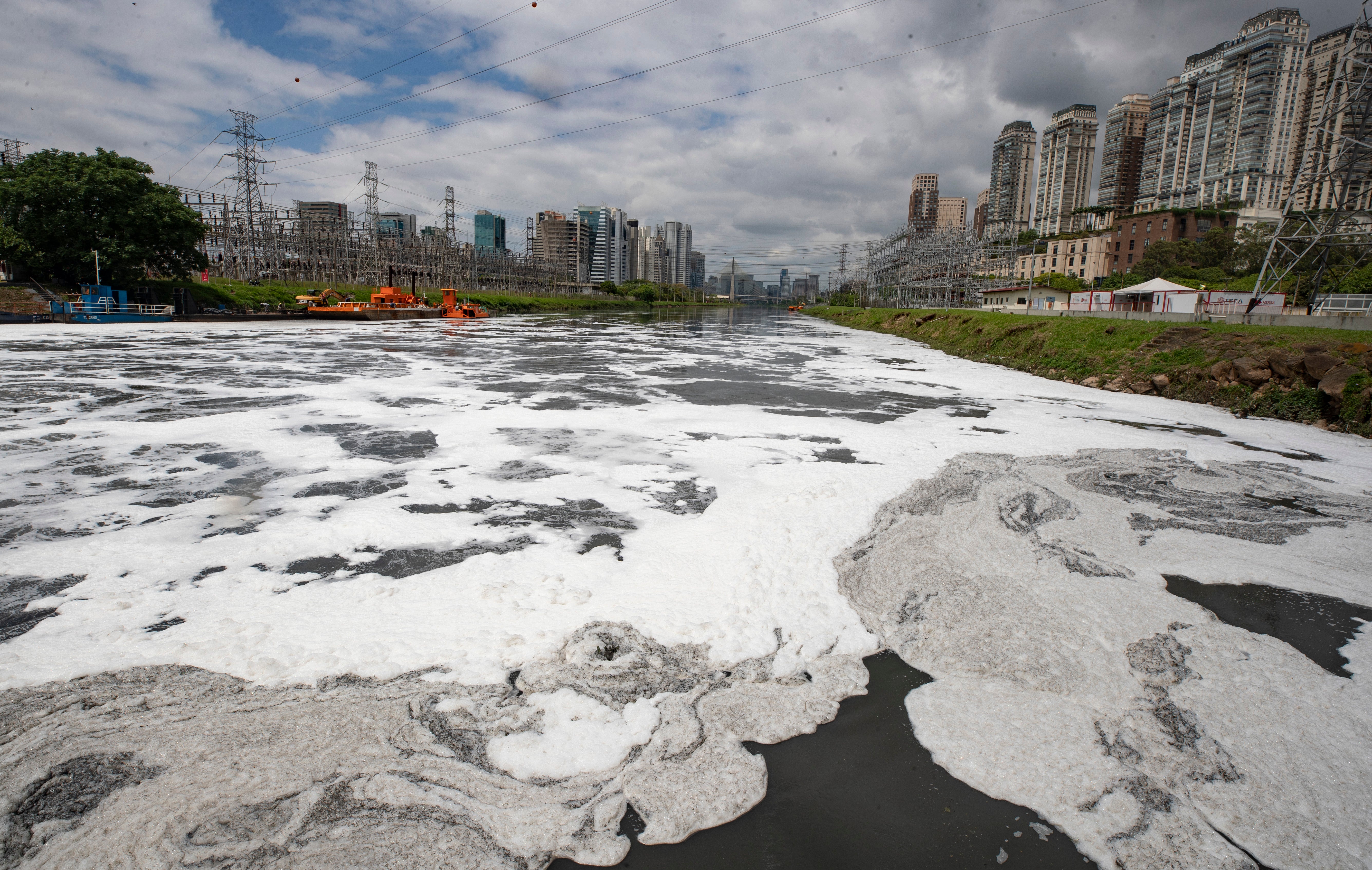In Brazil's richest city, works to clean a filthy river

Your support helps us to tell the story
From reproductive rights to climate change to Big Tech, The Independent is on the ground when the story is developing. Whether it's investigating the financials of Elon Musk's pro-Trump PAC or producing our latest documentary, 'The A Word', which shines a light on the American women fighting for reproductive rights, we know how important it is to parse out the facts from the messaging.
At such a critical moment in US history, we need reporters on the ground. Your donation allows us to keep sending journalists to speak to both sides of the story.
The Independent is trusted by Americans across the entire political spectrum. And unlike many other quality news outlets, we choose not to lock Americans out of our reporting and analysis with paywalls. We believe quality journalism should be available to everyone, paid for by those who can afford it.
Your support makes all the difference.The Pinheiros River that runs through the heart of Sao Paulo makes its pollution known with a miasma that wafts across city streets, choking rich and poor alike. It’s an unwelcome feature of the city that is also Brazil’s wealthiest and the financial heart of Latin America.
Efforts to clean up the river have gathered momentum, with the state government working to make good on a pledge that past administrations have been unable to deliver on, at least as far as three decades back.
While the Pinheiros River is bordered by symbols of Brazil’s haves — gleaming glass office towers, multi-story apartments in the sky and a private school that charges the nation’s highest tuition — it is also home to many of its have-nots. Some 3.3 million people live in the 16-mile river's basin, some in slums and homeless tent cities from which sewage flows into the waterway.
“We have no money to live elsewhere,” said Adriana Maria, a 40-year-old maid who lives in the Americanopolis slum. “Politicians won't even look at us.”
Maria's home is one of 43,000 structures that Sao Paulo’s state-owned water and waste company Sabesp says it has linked to sewage collection since the project began less than a year ago. It will connect an additional 487,000 homes and buildings by 2022, removing all waste from the river.
Whether that deadline is overly optimistic, the need is real. In Sao Paulo about 25% of the population — more than 2.5 million people — lacks access to waste treatment, said Edison Carlos, president of Trata Brasil, an organization that promotes clean water and sewerage.
“It is less water than sewage,” Carlos said of the Pinheiros River.
Ongoing works also entail trash removal, because 100,000 tons of it are tossed into the water every month, said Marcos Penido, secretary of infrastructure and environment for the state. Garbage amasses along the riverbanks and in small islands that form in the dry season throughout the riverbed, creating hills of plastic bottles, styrofoam, and discarded clothing.
The final contracts for the project were signed in July, Penido said.
In 1992, Sabesp began a project that aimed to depollute the 715-mile Tiete River, of which Pinheiros is its most contaminated tributary. That project is still ongoing. And in 2001, then-Gov. Geraldo Alckmin announced a project to depollute the river, though it did not address sewage problems.
The new undertaking may turn out to be successful by 2022, even if it doesn't bring about a sparkling transformation, said Trata Brasil’s Carlos.
“The project is to improve the river’s quality, not to make it transparent, with fish and where people can swim,” he said. “We do expect for the smell, which is especially bad on hot days, and the mosquitoes to be eliminated, and to see the return of some fish.”